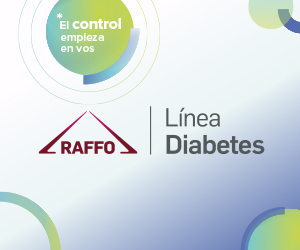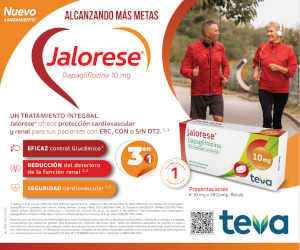Education Committee. Transition of adolescents with type 1 diabetes mellitus from pediatric teams to adult teams
DOI:
https://doi.org/10.47196/diab.v58i1Sup.760Keywords:
diabetes mellitus, adolescents, transition, educationAbstract
The transition period is defined as an active and multidisciplinary process that covers different medical, psychosocial and educational needs of the adolescent population with the aim of preventing complications and promoting adherence to treatment.
The primary objective is to train adolescents with diabetes to acquire autonomy and independence that allows adequate control of the disease. These skills are not achieved in most people before the ages of 16 to 18.
Therapeutic education programs for people with type 1 diabetes in the adolescent stage have the objectives of facilitating the transition process and achieving their autonomy and empowerment. Adolescence is a biological and social stage where many changes occur, to which is added the transition from the Pediatric to the Adult health care team.
This is considered a time of great challenges in diabetes care, so it must be planned and requires preparation from the patient and their family.
This recommendations are aimed at providing tools that help health teams specialized in diabetes to carry out transition education programs that reduce treatment abandonment and associated complications in adolescent patients with dbt1 during the transition from pediatric teams to healthcare teams. To do this, a bibliographic search of publications on the topic from the last 5 years was carried out. The most relevant ones were selected.
Various publications suggest that the transition from pediatric to adult care should be a planned and organized process rather than a sudden and unforeseen transfer. This includes carrying out education programs that accompany this stage of vulnerability.
References
I. Peters A, Laffel L; American Diabetes Association Transitions Working Group. Diabetes care for emerging adults: recommendations for transition from pediatric to adult diabetes care systems: a position statement of the American Diabetes Association, with representation by the American College of Osteopathic Family Physicians, the American Academy of Pediatrics, the American Association of Clinical Endocrinologists, the American Osteopathic Association, the Centers for Disease Control and Prevention, Children with Diabetes, The Endocrine Society, the International Society for Pediatric and Adolescent Diabetes, Juvenile Diabetes Research Foundation International, the National Diabetes Education Program, and the Pediatric Endocrine Society (formerly Lawson Wilkins Pediatric Endocrine Society). Diabetes Care 2011;34:2477-85.
II. Barrio-Castellanos R. La transición del adolescente con diabetes a la unidad de adultos. Diabetes Práctica 2017;08(02):49-96.
III. González F, Roizena M, Rodríguez-Celina MM, et al. Validación español-argentina del cuestionario de transición a la atención médica del adulto en adolescentes con enfermedades crónicas. Arch Argent Pediatr 2017;115(1):18-27.
IV. American Diabetes Association. Children and adolescent: Standard of Care. Diabetes Care 2021;44(Supp 1):S180-S199.
V. Canadian Paediatric Society. Transition to adult care for youth with special health care needs. Paediatrics Child Health 2007;12(9):785-788.
VI. Blum R. Overview of transition issues for youth with disabilities. Pediatrician 1991;18:101-4.
VII. Kaufman M. Easy for you to say: Q & A’s for teens living with chronic illness or disability. Toronto: Key Porter Books, 2002.
VIII. Rosen D. Between two worlds: bridging the cultures of child health and adult medicine. J Adolesc Health 1995;17:10-6 .
IX. De Cunto CL. Transición en la atención médica, de la pediatría a la medicina del adulto. Arch Argent Pediatr 2012;110(4):341-347/341.
X. Cameron FJ, Amin R, de Beaufort C, Codner E, Acerini CL. ISPAD Clinical Practice Consensus Guidelines 2014: Diabetes in adolescence. Pediatric Diabetes 2014;15 (Suppl. 20):245-256.
XI. Pless IB, Power C, Peckham CS. Long-term psychological sequelae of chronic physical disorders in childhood. Pediatrics 1993;91:1131-6.
XII. Britto MT, DeVellis RF, Hornung RW, et al. Health care preferences and priorities of adolescents with chronic illnesses. Pediatrics 2004;114:1272-80.
XIII. International Diabetes Federation. Guía de Práctica Clínica de Educación en Diabetes. 2022. Disponible en: https://idf.org/news/guia-de-practica-clinica-de-educacion-en-diabetes/.
XIV. Cooley WC, Sagerman PJ. American Academy of Pediatrics; American Academy of Family Physicians; American College of Physicians;Transitions Clinical Report Authoring Group. Supporting the health care transition from adolescence to adulthood in the medical home. Pediatrics 2011;128:182-200.
XV. Garvey KC, Foster NC, Agarwal S, et al. Health care transition preparation and experiences in a U.S. national sample of young adults with type 1 diabetes. Diabetes Care 2017;40:317-324.
XVI. Spaic T, Robinson T, Goldbloom E, et al. Closing the gap: results of the multicenter Canadian randomized controlled trial of structured transition in young adults with type 1 diabetes. Diabetes Care 2019;43(6):1018-1026.
XVII. Ricaa-Etcheverría I, Ferrer-García JC, Barrio R, Gómez-Gila AL, Forno JA, et al. Transición del paciente con diabetes tipo 1 desde la Unidad de Diabetes pediátrica a la Unidad de Diabetes de adultos. Documento de consenso. Sociedad Española de Diabetes, 2014. doi: 10.1016/j.avdiab.2014.03.002.
XVIII. Flor M V, Jansà I Morató M, et al. Results of a specific and structured program in the transition of young patients with type 1 diabetes from the paediatric center to an adult hospital. The experience of a decade. Endocrinol Diabetes Nutr 2021 Feb;68(2):82-91. doi: 10.1016/j.endinu.2020.06.001
Downloads
Published
How to Cite
Issue
Section
License
Copyright (c) 2024 on behalf of the authors. Reproduction rights: Argentine Diabetes Society

This work is licensed under a Creative Commons Attribution-NonCommercial-NoDerivatives 4.0 International License.
Dirección Nacional de Derecho de Autor, Exp. N° 5.333.129. Instituto Nacional de la Propiedad Industrial, Marca «Revista de la Sociedad Argentina de Diabetes - Asociación Civil» N° de concesión 2.605.405 y N° de disposición 1.404/13.
La Revista de la SAD está licenciada bajo Licencia Creative Commons Atribución – No Comercial – Sin Obra Derivada 4.0 Internacional.
Por otra parte, la Revista SAD permite que los autores mantengan los derechos de autor sin restricciones.


































